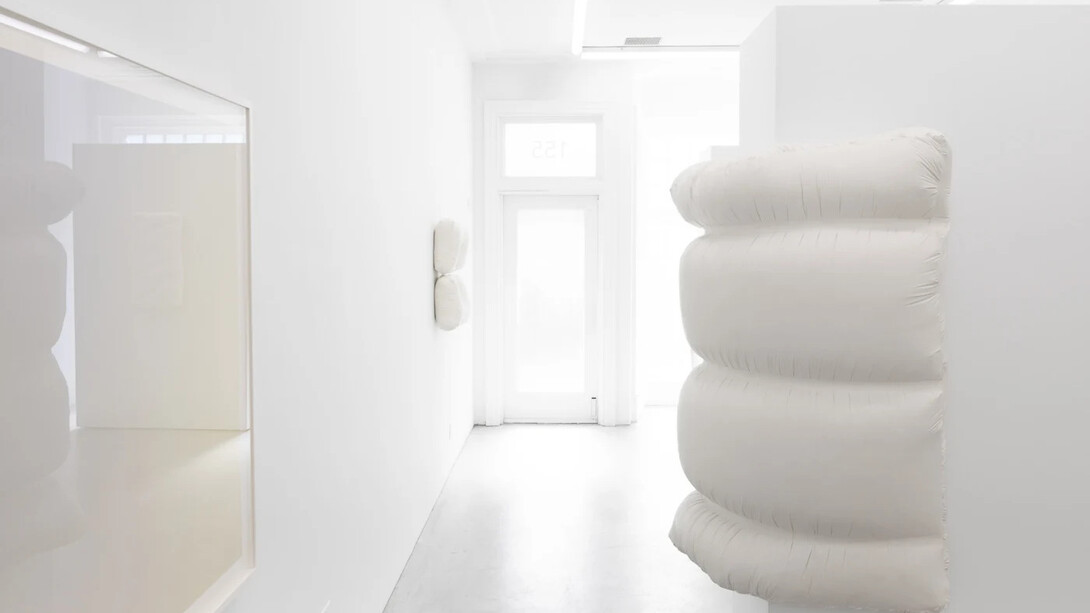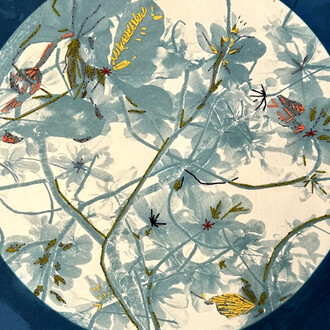What lingers brings together two artists whose practices transform fleeting moments into lasting forms, moments illuminated through their capture and opened to sustained contemplation. The works embrace impermanence as a site of wonder, where time reveals itself as fluid, luminous, and alive in the act of attention.
Ian McMahon’s sculptures dwell in the poetics of material instability. Working with plaster, a substance that evokes both architectural solidity and delicate fragility, he shapes states of becoming: air turning to form, pressure imprinting surface, collapse hovering within structure. His site-responsive works seem caught mid-breath: walls that bulge and strain, shells that hover between hollow and weighty. Each piece crystallizes what might otherwise pass unnoticed—a balloon’s expansion, a breath of air, holding within it the resonance of presence and transformation.
James Florio turns his lens toward the atmosphere itself. In his Fog series, the subject is air made visible, light and moisture folding together into mutable form. These images record the ways in which air gathers, disperses, and reshapes perception, suspending vision within a medium usually unseen. Rather than framing landscape, Florio captures the air as environment, an elemental presence in constant flux. The photographs are durational in their attention, marking not a fixed instant but the ongoing movement of the invisible made briefly tangible.
While materially distinct, McMahon and Florio’s practices converge in their pursuit of what resists possession. McMahon solidifies the breath of air into plaster, transforming the immaterial into form, while Florio makes the atmosphere visible, allowing the intangible to hold itself as image. Both artists dwell in thresholds—between expansion and collapse, between presence and disappearance, between what is felt and what is seen. Their works do not attempt to halt time but to attune us to its unfolding, to the subtle states where matter and perception shift.
Together, McMahon and Florio offer a shared meditation on the ephemeral as radiant and essential, forms of air and matter that carry vitality in their transience. What lingers affirms that beauty emerges not in permanence, but in the act of noticing—where what seems most fleeting is revealed as enduring through the gesture of being held, shaped, and seen.










